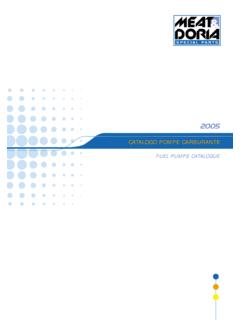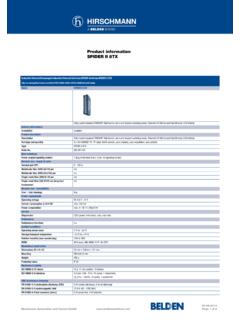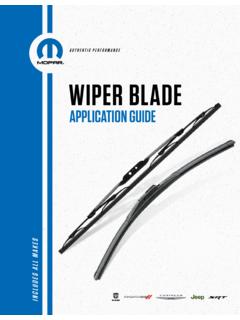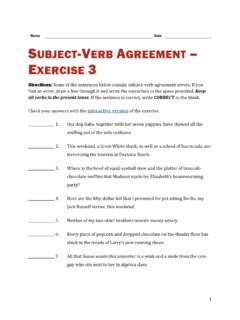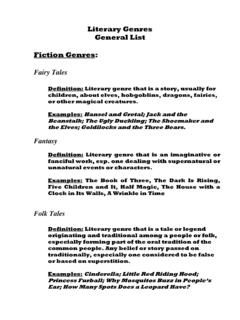Transcription of Long-lining Techniques - Magnolia Crappie
1 1 Long-lining Techniques By Bernard Williams Magnolia Crappie Club Introduction I began pulling jigs ( Long-lining , flat- lining ) out of necessity. My partner Don Terry of Jackson, MS and I fish with the Magnolia Crappie Club. We just could not complete with the world class spider-riggers and jig fishermen. You see, we had to compete with the likes of Rabbit Rodgers, Shelton Culpepper, Hugh Kutz, Paul Johnson, Kent Driscoll, John Harrison and others. These guys are good. I mean real-real good. I ve seen this method produce many winning sacks. Two of the best in the country fish in the Magnolia Crappie Club. The two tournament-circuit Crappie fishermen that I m referring to are Earl Brink Jr. of Show-Down Tackle (3 Time National Champion) and Kenny Browning (3rd Place Finisher Crappie Masters 2009 National Championship).
2 Earl had learned this technique fishing and guiding for walleye up north (Lake Michigan), and Kenny had perfected his skills on the Alabama chain of lakes (Weiss, Logan Martin, and Neely-Henry). My First Lesson I called Earl in Cummings, GA and he called Kenny in Brandon, MS and setup a trip on my home lake, Ross Barnett Reservoir near Jackson, Mississippi. Kenny was unfamiliar with this lake; he had only fished it a few times since moving from Gadsden, AL, so we were doing each other a good deed. He wanted to find fishing spots, I wanted to learn how to long -line. I ve seen Earl and Kenny catch two limits in a few hours. We pulled up to one of the most fished spots on the lake. We call it the S-Curve.
3 The Pearl River makes an S as it winds its course through the lake. It s a just what the doctor ordered place to catch staging Crappie . I said to Kenny, the fish are here but so are the fishermen at least 15 boats. He said No Problem . He killed the engine, deployed the MinnKota Terrova 101 trolling motor, turned on the auto-pilot and we took off. For all you who have never heard of an auto-pilot, its name says it all. It will keep you on course no matter what the wind does. It has a state-of-the-art compass system in the head of the motor that keep the boat on the set course heading. 2 Kenny turned the motor on constant; set the speed about 1 mph and we were off. We started casting the rods that had two 1/8th marabou soft body jig made by Show-Down Tackle, on each rod.
4 We made normal casts and placed each rod in a rod holder on the back and sides of the boat. He had two (2) 16 rods and two (2) 12 rods for the front left and right sides of the boat. I had four (4) 8 rods and two (2) 9 rods for the back of the boat. As soon as I placed a rod in the holder the slack was picked up in a few seconds by our constant boat speed. Before I could get the third rod set, the first rod was bent with a monster slab Crappie . I said to Kenny, stop the boat. No, no he cried. Just take your time and reel the fish, not too fast or you ll pull the jig out of the fish s mouth. The fish must be directed thru your other set lines, trying not to entangle them. This scenario occurred over and over throughout the afternoon.
5 Kenny said this is your first lesson in Long-lining . The boat must never, never stop ; if a rod hangs you break the jig or the line and re-tie the jigs, but you never stop the boat. Stopping the boat causes all the jigs to go to the bottom hang or become so tangled only a knife will clear up the mess you ve created. To make a long story short, we really caught the Crappie . We weighed our 7 biggest fish at more than pounds. So now, I know it works. I watched what he did, asked questions about jig size, boat speed, how to make turns and distance of cast. That was my initial training. I had to put into practice and improve my skills from that moment, mainly thru trial and error. I needed the right trolling motor.
6 The rod-holders had to be mounted correctly. Boat Speed The first lesson - Your boat speed is one of the controlling factors in the depth of your lures. The faster you pull the jigs the higher in the water column the jigs will run. Wind is our most formidable opponent. We have to use it in our favor. If you can t go with the high wind, try going at an angle with the wind. Try anything except going directly into a high wind. Play with the speed control until you locate the fish. If you see the rods bouncing off the bottom speed up or give the reel a turn or two. If you re fishing humps and ledges simply speed up and get over the hump or ledge and then slow down when you are clear these obstacles.
7 Cast Length 3 The second controlling factor is how far behind the boat your jigs are pulling. There is no science, set rule, no regulations to follow; only trial and error. If you do not want to adjust your speed, adjust your line length. Flip the bails and let it off the line, be careful larger size jigs will hang quickly. Go in the back yard, make a long cast and then step it off. This will give you an idea of the cast distance. Line Size Some of you fisherman tend to stay with the same line weight. I have found that the smaller the diameter the line the deeper the jig will run. I ve also tested Vicious braided, co-polymers, monofilament, and fluorocarbon. Braid tends to run lots deeper than mono.
8 Vicious braid helps to get the jigs deep and into the strike zone. When fishing shallow water the buoyancy of Vicious Monofilament keep the jigs from sinking too fast. Vicious Fluorocarbon works great in real clear water. This will take some testing, trial-and-error. Tying Jigs on the Line I mainly fish a double jig rig; I try to tie my jigs about 4 feet apart using double loop knots. I prefer double overhand loop knots for both bottom and top jig with about a 4 6 loop for the top and no more than 2 3 loop for the bottom jig. This gives both jigs an independent presentation. Slide two jigs on the line. Slide the top jig up far enough to make a 2 - 3 double loop knot on the bottom jig.
9 Slide the second jig up 4 to 5 . Then make another double loop knot. The jigs should hang independent of each other, they should swing back and forth when the line is moved. You will catch two fish from time to time. Reeling in the Fish You must be careful when reeling in a fish. With the boat traveling at trolling speed; be sure to reel the fish in slowly. The fish must be directed thru multiple lines without tangling, and without pulling the hook out of the fish s mouth. Be sure to have a long handle net (EGO) on hand to capture the fish when he reaches the boat. Do not try to lift a fish with the rod. This is the primary cause in broken rod tips. 4 Rod Spacing Another important factor in using this technique is proper spacing of you rods.
10 Allow at least 3 4 between each rod tip. With 16 rods on each side, you can completely cover an area up to 40 feet wide. Making several passes over an area allows you to quickly cover a wide section of water. Using the BAIT-PUMP I ve found that at times when the fish just wouldn t corporate, we simply pumped some Crappie nibble into the end of the tube jig and bam, bam. This is one of latest and greatest addition to my tackle arsenal. Using the GPS with a Lake Map Chip A good quality GPS and a Navionics Hotspot chip is a necessary addition to your Long-lining equipment. While paper contour maps are a great way to study before you reach the lake, it s a guessing game when you re on the water.

